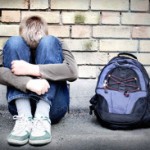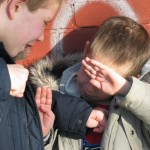 By Melanie Patten, The Canadian Press
By Melanie Patten, The Canadian Press
HALIFAX — The video on YouTube shows a pretty Nova Scotia teenager strumming her guitar and singing softly to her online audience.
She is, by all appearances, a confident and talented high schooler. It’s not obvious by watching Jenna Bowers-Bryanton play her song that she is a young girl battling depression.
And there’s no trace of a girl who, at the age of 15, chose to take her own life after months of being bullied.
Pam Murchison, Jenna’s mother, says the torment by her daughter’s peers happened at school in Truro. But she says the harassment through text messages and cruel comments posted online was especially troublesome.
“They told her she might as well kill herself, she was no good, she couldn’t sing, she was ugly,” Murchison recalls. “Anything that you would do to chip away at a person’s self-esteem, they did it.
“I believe in my heart, and nobody can tell me any different, that it was the bullying that pushed her over the edge.”
Since Jenna’s death last January, Murchison has dedicated herself to speaking out against bullying and, in particular, cyber-bullying — a problem that advocates and experts say is all too common in this digital age, yet still needs awareness and action.
“If I can save one kid or one parent from going through what I’ve been going through, then it’s going to be worth it,” says Murchison.
Shaheen Shariff, a Montreal-based expert on law and policy relating to cyber-bullying, says protecting victims from harassment has to start early, before children grow up to be bullies.
Part of that, she says, is teaching youth about empathy.
“(Bullying is) grounded in societal norms that especially now encourage so much competition,” says Shariff, an associate professor in the department of integrated studies in education at McGill University.
“There’s a lot of putting down of people and laughing at people at their expense. There’s a devaluing of humanity.”
Last week, with Shariff’s expertise, McGill launched a website that aims to clarify the lines between cyber-bullying and socially responsible online behaviour.
Definetheline.ca, which includes information for young people, parents, teachers and policy makers, features videos dramatizing just how quickly vicious rumours can spread and how even the smallest lies can lead to bullying, name-calling and alienation.
The interactive site also delves into legal issues. Can teasing be considered criminal harassment? When does spreading rumours or posting demeaning photos online become cyber-libel?
Shariff says criminal charges can be laid in some cyber-bullying cases if there is a perceived intent to harm, but it remains rare.
“We’re still waiting for direction from the courts on many issues,” says Shariff.
Most cyber-bullying cases, she notes, are often settled out of court.
“I think that’s partly because the courts are reluctant to hear them because they don’t want to open the floodgates to litigation.”
Shariff says another part of the problem is that victims of bullying are often too fearful of retribution to come forward unless they can remain anonymous. Some victims also believe that nothing can be done about the problem, so they resign themselves to being picked on.
Murchison says she knew Jenna was being bullied, but her daughter was reluctant to disclose details. Even when it got so bad that Murchison pulled Jenna from school for the remainder of a semester, her daughter insisted the issue be left alone.
Shariff says schools also need to stand up for students and let them know their problems will be heard and taken seriously.
“From my research, I’ve seen a pattern where a lot of schools are more concerned about their reputation and sweeping it under the rug,” she says. “Kids need to know they’re going to be protected.”
Earlier this year, the Nova Scotia government announced it would set up a special task force on cyber-bullying in the wake of Jenna’s death. The government said it was also responding to the suicide of a 17-year-old girl from Parrsboro, N.S., whose parents said was also bullied at school and online.
“We’re not naive enough to think that we’re going to solve this, but we hope that what will come out of it is some recognition that (cyber-bullying) is societal — that everyone has a role to play,” says Rosalind Penfound, deputy minister of education.
Teachers, police, parents and mental health professionals will participate in the study group, which will be headed by Wayne MacKay, a human rights expert and law professor at Dalhousie University in Halifax.
Focus groups will also be held to seek input from young people.
It’s expected the task force will look at strengthening provincial and school policies around online bullying and at the possibility of legislation.
As the study group does its work, Murchison says she will continue to do hers.
She has already done countless media interviews on the subject. And every so often, Murchison takes time off from her job as a correctional officer to address students at schools and tell them Jenna’s story.
It’s not easy to talk about her daughter, but Murchison believes Jenna deserves at least that much.
“It’s been hell the last four months,” she says. “But I just can’t lose her for nothing.”















